Albariño wine (“alba-reen-yo”) is a refreshing coastal white from the Iberian Peninsula, loved for its rich stone fruit flavors, hint of salinity, and zippy acidity.
Primary Flavors
- Lemon Zest
- Grapefruit
- Honeydew
- Nectarine
- Saline
Taste Profile
Handling
-
SERVE
38–45°F / 3-7°C
-
GLASS TYPE
White
-
DECANT
No
-
CELLAR
3–5 Years
SERVE
38–45°F / 3-7°C
GLASS TYPE
White
DECANT
No
CELLAR
3–5 Years
Albariño Food Pairing
A friend to all things from the sea, Albariño pairs exceptionally well with white fish, light meats, and fresh leafy herbs.
Meat Pairing: Lighter meats, fish, and seafood sing with Albariño. Try it with ceviche, seafood risotto, grilled (or fried) fish tacos, oysters, mussels, and clams.
Cheese Pairing: Soft cheeses like burrata or semi-hard cheeses such as Manchego, Gouda, and salty feta will be fantastic alongside these fresh and bright wines.
Vegetable Pairing: The grassy notes of Albariño play well with fresh green herbs and sauces like salsa verde. Try Spanish tapas such as grilled padrón (or shishito) peppers, grilled vegetable dishes, Caprese, or even Caesar salad.
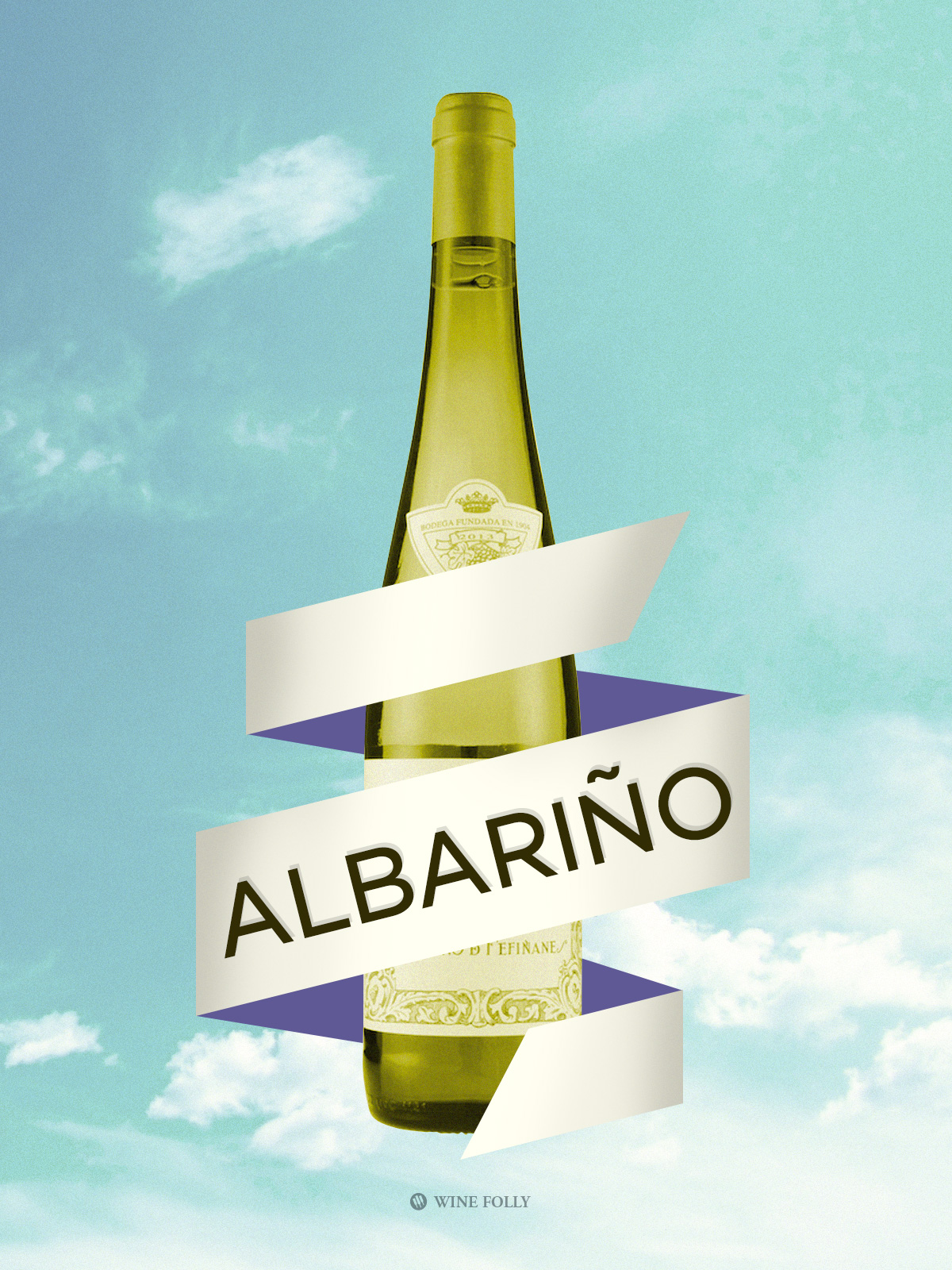
6 Fun Facts About Albariño
- On the Wine Day Calendar, August 1st is Albariño Day!
- Some of the oldest Albariño vines are said to be up to 300 years old, though most are much younger. (For comparison, the oldest known grapevine in the world is over 400 years old.)
- It’s common to see the word “Albariño” on Spanish labels, unlike other areas which label by region.
- Spanish and Portuguese winemakers traditionally prioritize freshness with Albariño, though a few producers age it in oak for added complexity.
- The grapes are tiny with thick skins. Not only does this make Albariño harder to produce, but it also results in a distinct raw-almond or citrus-pith-like bitterness from the skin’s phenol content.
- Most Albariño vineyards have a very different look. Vines are trellised above your head on Pergolas to help keep grapes dry and rot-free.
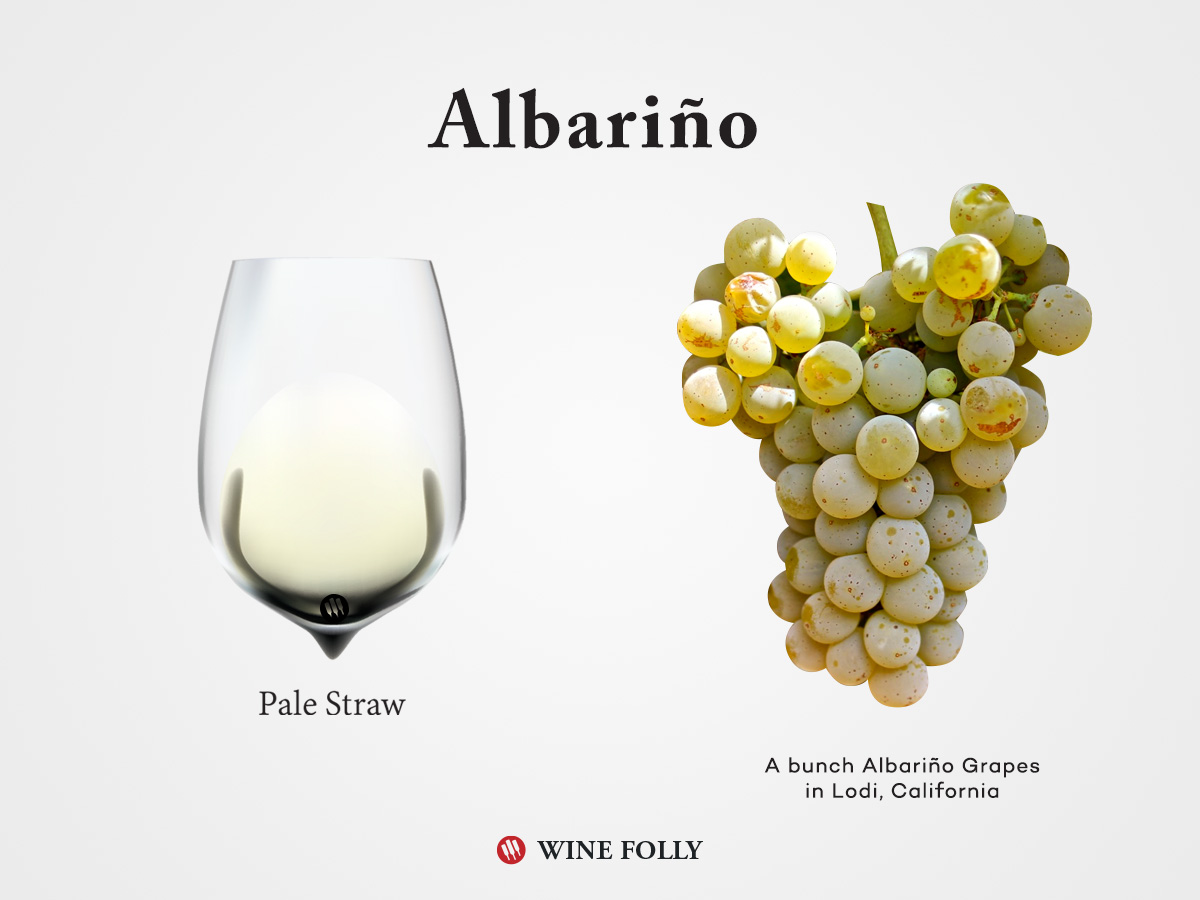
Tasting Albariño
On the nose, expect nectarine, lime, and grapefruit aromas, with subtle hints of honeysuckle and occasionally beeswax.
On the palate, Albariño wines have a weighty, mid-palate, mouth-watering acidity that finishes with salinity and sometimes a subtle bitter note (like green almond or citrus pith).
Most Albariño wines are best enjoyed young and fresh. However, high-acid, lees-aged styles can age gracefully for several years.
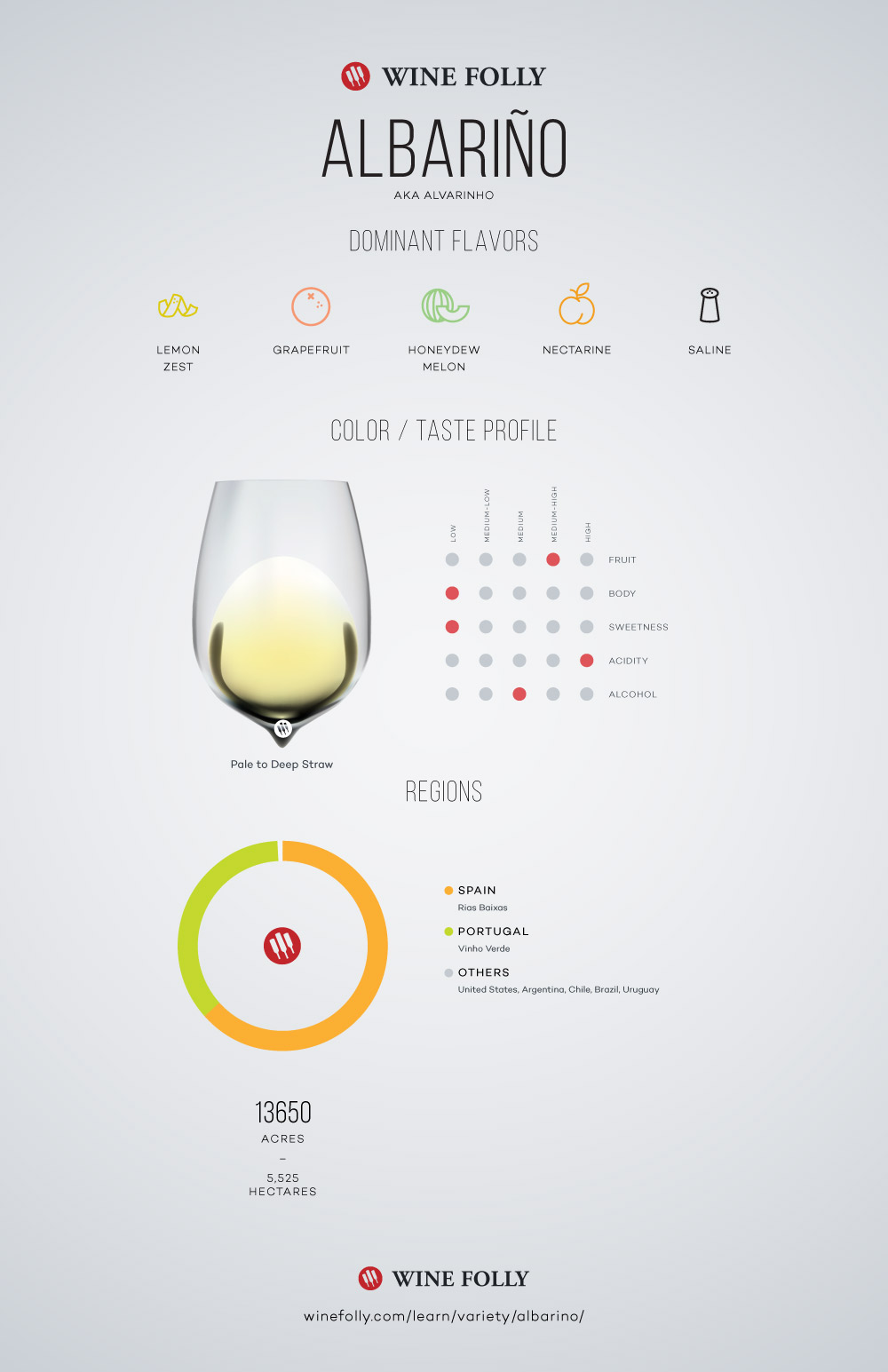
Where Does Albariño Grow?
- Spain: ~13,326 acres / 5,393 hectares (Rías Baixas / Galicia)
- Portugal: ~7,067 acres / 2,860 hectares (Minho / Vinho Verde)
- California: ~311 acres / 126 hectares (Central Coast)
Total Vineyard Area – 20,769 acres (8,405 hectares) (Source: University of Adelaide, 2021)
Albariño performs well in cool and intermediate climates such as Galicia, which experiences heavy Atlantic storms. Fortunately, the area offers 2,000+ hours of growing degree days, making it possible to fully ripen Albariño.
Despite its thick skins and hardy vines, Albariño is sensitive to mildew and rot. Thus, in wet regions, it’s important to keep the roots dry with well-draining soils (such as sandy, granitic soils).
Albariño Wine Regions to Explore
There are two main “homes” where Albariño can be widely found: Rías Baixas in Spain and Vinho Verde in Portugal (where it’s called Alvarinho).
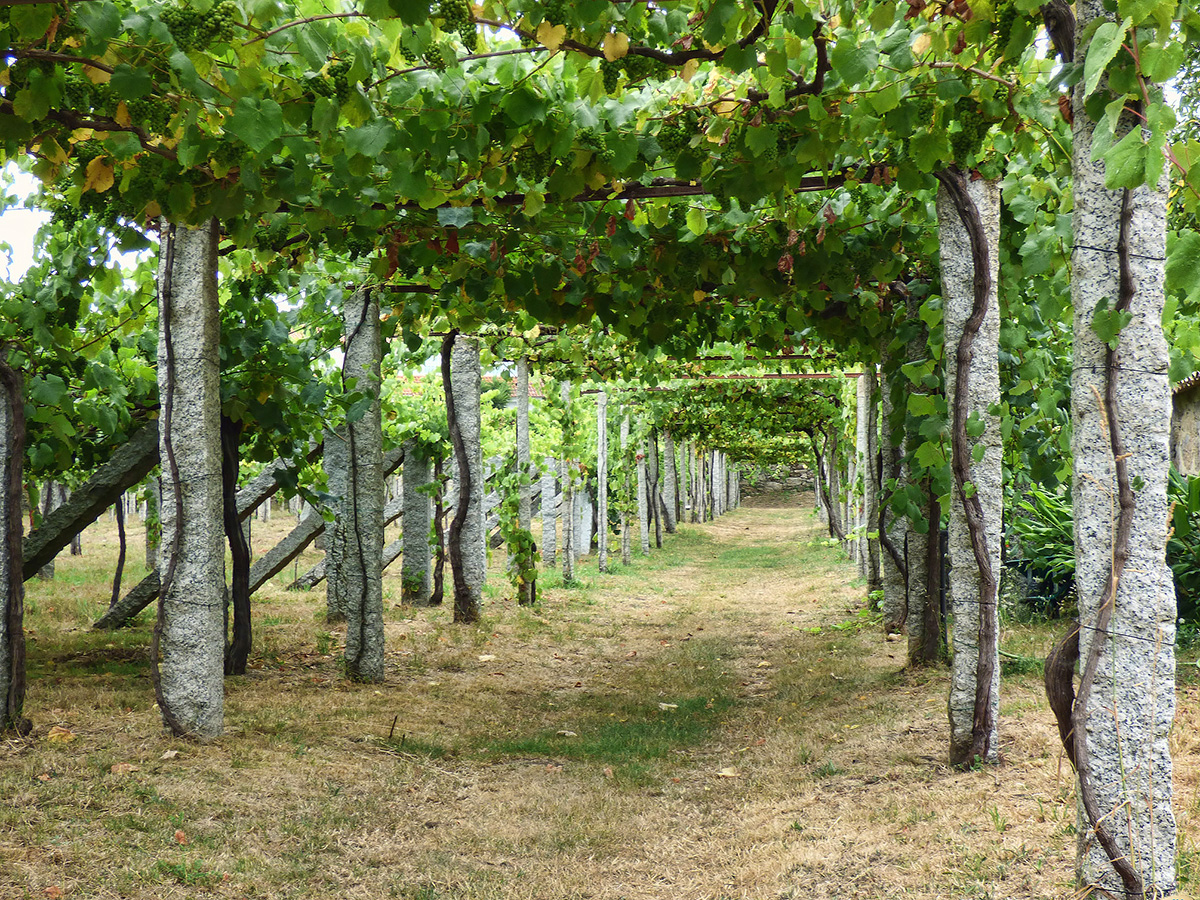
Rías Baixas
Flavors: Apricot, Melon, Peach, Honeysuckle, Grapefruit
The name Rías Baixas is Galician for “Lower Rivers,” and there are four main rivers (Muros y Noia, Arousa, Pontevedra, and Vigo). Rías Baixas is divided into five sub-zones:
- Ribeira do Ulla: The newest and most northerly subregion. The Inland area has fruitier wines because of more moderate weather.
- Val do Salnés: Spanish winemakers credit this as the birthplace of Albariño. The region skirts the coast and produces wines with intense minerality and salinity.
- Soutomaior: The smallest of the five growing areas on a river estuary. Expect more saline, mineral-driven wines.
- Condado do Tea: Named after the river Tea, this region is the furthest inland with the most clay content. Thus, wines are often bolder and fruitier.
- O Rosal: This region forms the border with Portugal as it opens to the sea.
Each region has its own unique terroir, but all areas share a similar sandy, granitic soil type.
Rías Baixas is controlled by a wine commission called the Consejo Regulador. The Consejo Regulador enforces strict regulations on grape varieties, vine density, maximum vineyard yields, and winemaking practices in Rías Baixas.
A strict tasting committee also samples all wines in Rías Baixas for quality assurance. Only wines that pass the Consejo test can be labeled “Rías Baixas.”
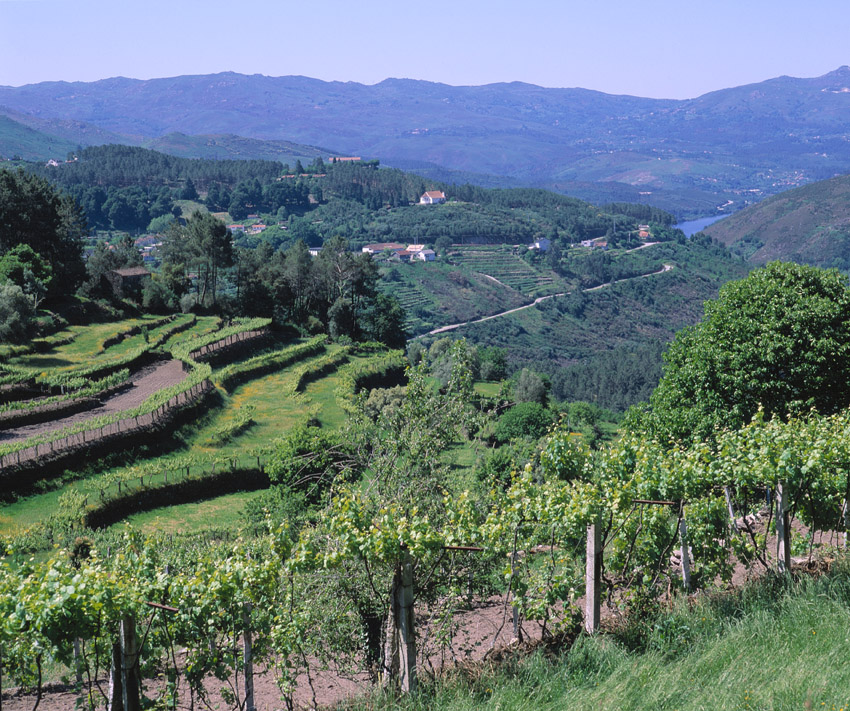
Vinho Verde
Flavors: Honeydew Melon, Lime, Lemon, Honeysuckle, Grapefruit
Most Vinho Verde wines are bright and dry with some spritz (carbonation), and lower alcohol levels, ranging between 8.5% to 11.5% ABV.
Many locals in this heavily populated region have vineyards and grow grapes for the regional Vinho Verde wine. Nearly 20,000 growers in the area have tiny plots. Thus, all the different grapes (Loureiro, Avesso, Arinto, etc.) are generally blended, so the exact blend for many wines is a mystery.
Because the weather is so cool here, Vinho Verde commonly uses Pergola training systems to promote airflow. It is also common to see grapes trained up the sides of trees!
The Vinho Verde DOC has nine sub-regions, but Monção e Melgaço stands out as the only one where Alvarinho can be bottled as a single-varietal wine. This sub-region borders Spain and has a warmer climate because the hills stop heavy rains.
Other Regions
California: The San Luis Obispo coast (between Santa Barbara and Monterey) has a similar climate to Albariño’s homeland. This cool spot has coastal fog and an ocean breeze that moderates California’s heat.
Uruguay: Albariño may be relatively new to Uruguay, but the climate there is eerily similar to that of the Galician coast, and wineries like the popular Bodegas Garzon are making precise, mineral-driven wines.